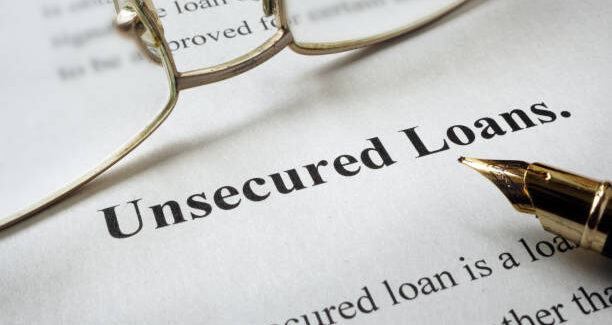
- November 4, 2023
- Mark Elwes
The Difference between Secured and Unsecured Loans: Which is Right for You?
Table of Contents
Loans can seem complicated at first glance. But when you break it down, there are really only two main types – secured and unsecured. Understanding the key differences between these loans can help you make a smarter borrowing decision.
Secured loans require collateral – usually a major asset like your house or car. Unsecured loans don’t require collateral. The lender is taking on more risk by not having a pledged asset to recoup costs if you stop paying.
Which type is right depends on your situation. Do you have significant assets but need lower rates to pay off high-interest debt? Then, a secured loan using that asset might make sense. But if you don’t have property to leverage, unsecured loans may be your best or only option despite the higher rates.
Understanding Secured Loans
Secured loans typically have lower interest rates. They allow you to borrow more money compared to unsecured loans. But they also come with risks, especially if you use an essential asset like your home or car as collateral.
Common Types of Secured Loans
- Mortgage Loans: The most common type of secured loan, with your house as collateral. Defaulting means foreclosure and losing your home.
- Auto Loans: These require your new car as collateral. Failure to pay means the lender can repossess your vehicle.
Advantages of Secured Loans
- Lower Interest Rates: Secured loans often have interest rates 2-4% lower than unsecured loans or credit cards. This major savings makes borrowing more affordable.
- Higher Borrowing Limits: You can often borrow thousands more with secured loans because of lower lender risk. This additional purchasing power is useful for large expenses.
- Build Credit History: Making on-time payments can improve your credit score over time. This helps qualify you for better loan terms in the future.
Risks of Secured Loans
With essential assets like your home or vehicle on the line, defaulting could impact your life severely. Be certain you can make the payments – don’t borrow more than you can realistically afford.
Ideal Candidates for Secured Loans
Secured loans are best for borrowers with significant assets who want lower interest rates. If you have substantial equity in your home or car, using it as collateral can lower your rate. Those looking to establish or rebuild credit history can also benefit. Just be sure only to pledge assets you could afford to lose as an absolute last resort. For any borrower, secured loans become risky if you overextend yourself financially.
In many cases, unsecured loans for bad credit can provide lower rates and more borrowing power. But you must weigh the risks, especially of putting essential assets on the line. Be realistic about what you can afford and the possibility of default before using collateral to secure the loan.
Understanding Unsecured Loans
Unsecured loans do not require collateral to obtain approval. This makes them quicker and easier to get, but it has some downsides. Let’s explore the critical features of these loans.
Common Types of Unsecured Loans
- Personal Loans: Often used to consolidate high-interest debt.
- Credit Cards: One of the most common unsecured loan types. The credit limit is the borrowing maximum.
- Student Loans: Loans to pay for education without needing collateral.
- No Guarantor Loans: One of the most taken loans, as everyone can’t afford a guarantor for loans. So, even with bad credit, one can quickly get bad credit loans with no guarantor from a direct lender.
Advantages of Unsecured Loans
- Faster Approval: The application and approval process is typically faster without collateral.
- Build Credit: Making on-time payments shows creditworthiness and can improve your credit score.
Risks of Unsecured Loans
- Higher Interest Rates: Without collateral, lenders charge higher rates to offset their increased risk.
- Lower Borrowing Limits: Approval is based on your income and credit score, so limits are lower than secured loans.
- Credit Score Impacts: Failure to repay on time tanks your credit score, making future borrowing very difficult.
Ideal Candidates for Unsecured Loans
Unsecured loans work best for those looking to borrow relatively small amounts without putting up an asset as collateral. They are a good option for financing one-time expenses like medical bills or car repairs. Otherwise, defaulting can negatively impact your credit for years to come. For larger loans, secured borrowing is likely the better choice if you have assets to leverage for a lower interest rate.
Comparing Secured and Unsecured Loans
When weighing your borrowing options, it’s helpful to contrast secured and unsecured loans in a few key areas:
Interest Rates and Terms
- Secured loans have lower interest rates, typically 2-5% less than unsecured loans. This major savings makes borrowing more affordable.
- Unsecured loans have higher rates to offset the lender’s increased risk without collateral. Rates are based heavily on your credit score and history.
- Repayment terms are longer for secured loans, often 7-30 years for mortgages. Unsecured loans have shorter terms of 1-7 years.
Credit Requirements
- Secured loans mainly consider the collateral asset value rather than your credit score. Your credit history less impacts rates.
- Unsecured loan eligibility and rates heavily depend on your credit score and report. Good credit means better terms. Poor credit means higher rates or denial.
Loan Amounts and Usage
- Secured loans allow you to borrow thousands more because of lower lender risk. Mortgages fund home purchases; auto loans buy vehicles.
- Unsecured loan amounts are lower, often just thousands for expenses like medical bills, home improvements or consolidating high-interest debt.
The right loan type depends on your needs, credit, and assets. In general, secured loans enable larger borrowing amounts at lower rates but put your assets at risk.
Conclusion
The key is only to borrow what you can truly afford to repay. Defaulting on any loan can tank your credit score and make future borrowing extremely difficult. Read all terms carefully and have a solid repayment plan before signing anything.
Comparison shop interest rates – those few percentage points really add up over months and years. And no prepayment penalties may apply if trying to pay a loan off early.
With education and planning, you can make a wise borrowing decision. Secured or unsecured, choose only what fits comfortably within your budget. Then, make all payments on time to keep your finances – and credit score – in good shape.

Mark Elwes is the Editor-in-Chief at Extramilefinance. He is a notable member of the content strategy team since his joining in 2017. Driven by his fondness for the finance industry, he has spent years gathering as much knowledge as possible about various financial products that include loans also. Previously, Mark worked as a senior journalist writer with experience in writing blogs and articles.










